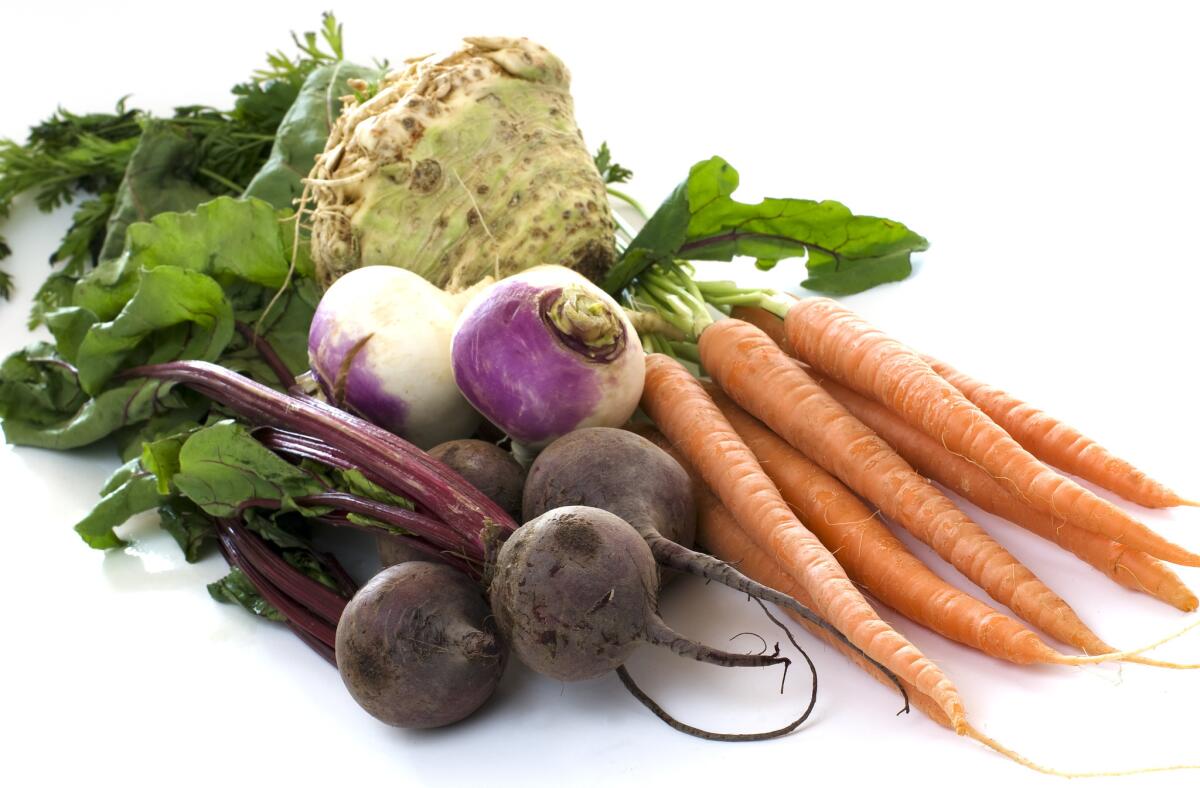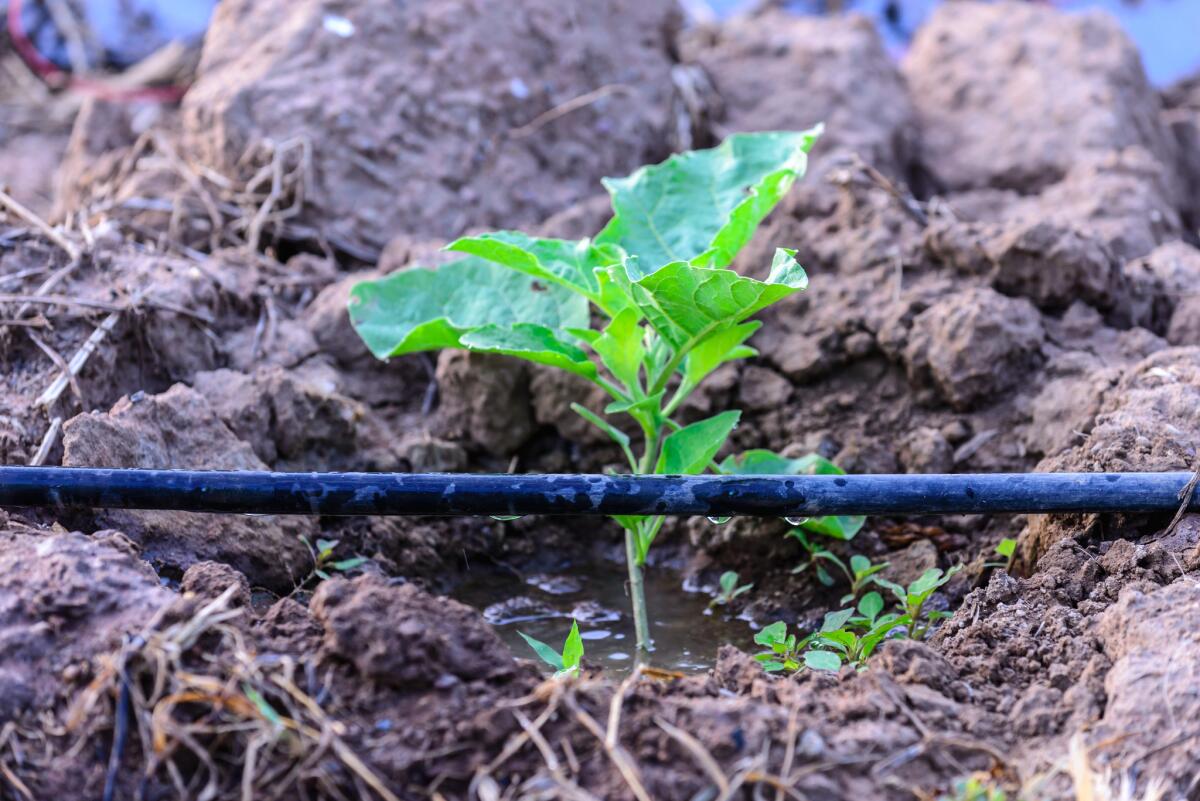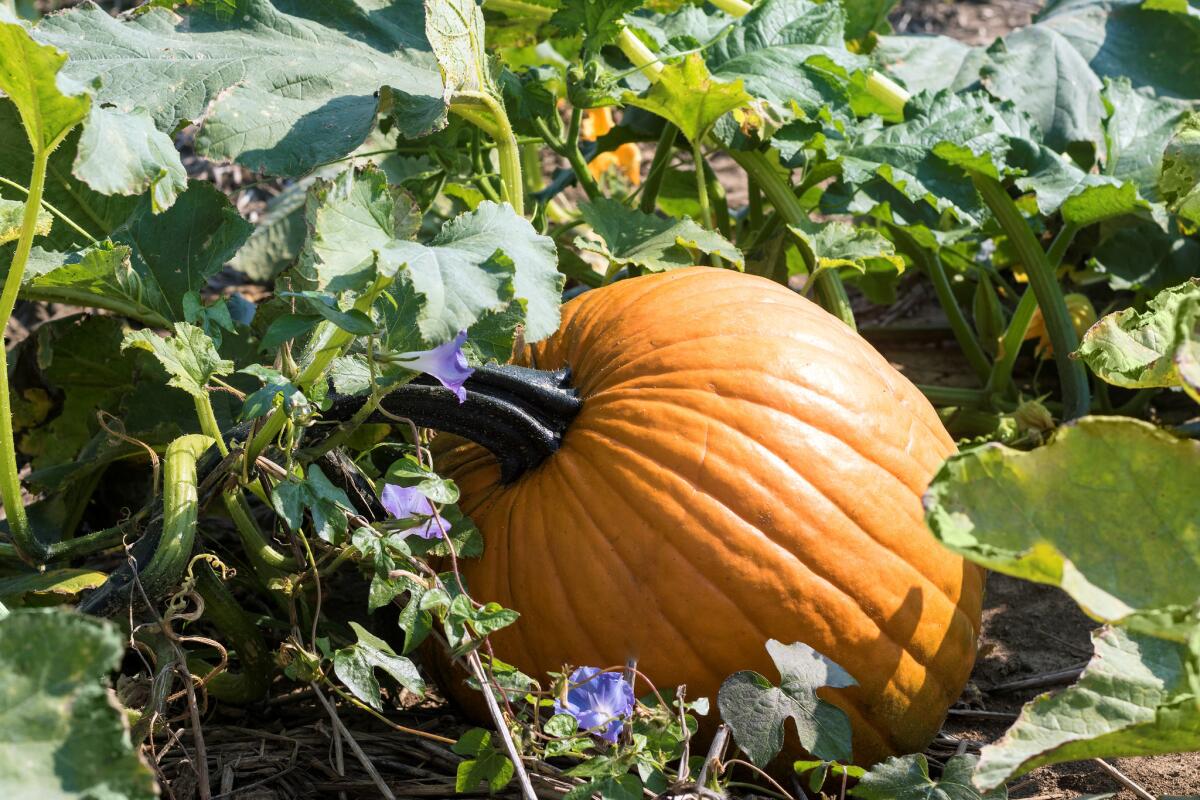What to do in your garden in October? Here are 24 ways to plant for spring

- Share via
In other parts of the country, spring is when gardeners go into a planting frenzy. But here in California, fall is the best time to plant. This is when the soil is still warm, but the air is cool. Cooler air reduces heat stress, and warm soil encourages rapid root growth. And with any luck, Mother Nature will help keep the soil damp all the way through next spring.
If it’s still hot weather for the first week or two of October, put your planting on hold. But once the heat abates, get ready, get set and start planting. Here are 24 ideas to get you inspired:
1. Plant just about any tree, shrub, perennial, vine or succulent that is native to our sister climates of southwestern and western South Africa, Australia, the west coast of Chile, and the Mediterranean coast. Also, this month is still warm enough to plant tropicals like banana, citrus, avocado or guava.
2. Before you plant, be sure your garden has a solid infrastructure: Grade the property so water flows away from the house and into planting beds or bioswales, so water remains on site.
3. If your garden is heavy clay soil, create large planting mounds of well-draining soil to plant into. A mix of 30% organic matter to 79% inorganic soil is a good starting point for all California natives and other Mediterranean climate plants.
4. Set up an in-line drip irrigation system (not the individual emitter style drip), and install an automatic irrigation controller.

5. Prepare for planting: Water the plant in its pot and let it drain for an hour or so. Then gently pull the plant out of its pot so you can see the rootball. Dig a hole as deep as the rootball is tall, and slightly wider. Experts recommend making squared-off holes with roughed up edges. This shape encourages roots to grow beyond the hole rather than circling around and around. Add a few handfuls of worm castings to the hole but no other amendments. Fill the hole with water and let it drain.
6. Once the plant is out of the container, carefully loosen the roots (except for bougainvillea or Matilija poppy, Romneya coulteri). Set the plant into the hole, just barely higher than the plant was in the pot (it will settle). Refill the hole with soil, wetting the soil and tamping it down as you go to eliminate air pockets. Once the planting hole is full, make a watering basin — basically a moat — around the stem or trunk. Set your hose to trickle water into the basin until the soil is saturated. Layer 3 or 4 inches of mulch onto the soil surface, starting at the outer edges of the basin and covering the entire planting bed.
7. Fall is a great time to renew your garden’s mulch. Organic mulch — that’s mulch made from leaves, bark, wood, etc. — acts as a sponge to hold water; it keeps moisture in the soil; it protects soil from erosion; and, as mulch breaks down, feeds the micro flora and fauna that help build healthy soils to support plants. Mulch should cover nearly all the soil surfaces in your garden, but do leave some large bare spots for our native, ground-dwelling bees. They are important garden pollinators.
8. With the sun lower in the sky, plants slow down and need less water.
9. Adjust your irrigation clock to water less often. If you have a smart irrigation controller, see if it is making the necessary adjustments on its own.
10. Do you know how long to water? Plants take up water from their roots, so water long enough to get the water that deep. Five minutes isn’t enough, and neither is 15 minutes if you are using drip irrigation. Use a soil probe and pull up a narrow core of garden soil. With a soil probe, it is easy to see how wet or dry the soil is, from the surface, down to a foot or more. Adjust your watering schedule so water reaches the deep roots every time, and then gets to dry down before you water again. How often you water should change with the seasons, but how long you water should always stay the same.
11. Watch for spring bulbs like Watsonia, Narcissus and Babiana to pop up their green spears now. If you have bulbs that didn’t get planted, go ahead and plant them now. They may not flower next spring, but they should flower their second spring in the ground.
12. Plant seeds for spring-blooming California poppies now. Try your hand at the common and beautiful sunny orange California poppies (Eschscholzia californica), the diminutive, yellow-flowered foothill poppy (Eschscholzia caespitosa) or red-orange wind poppies (Papaver heterophyllum).

13. Harvest the last of the melons, pumpkins and winter squash when the stems turn brown and separate from the base easily. Leave a few inches of stem attached as a handle. Store in a cool, dry, dark location.
14. Divide iris plants. Carefully separate the rhizomes (they look like tiny, jointed potatoes) and replant or share with friends. Use a sharp knife wiped clean with alcohol. If you divide more than one iris plant, wipe the knife with alcohol between plants to avoid spreading any pests or diseases.
15. Plant sweet pea seeds — the flowering kind — this month and next for a spring of color and fragrance.
16. Trim branches of scented geraniums and Martha Washington geraniums early in the month. In another month, you’ll cut off the long branches to force plants to grow new shoots at their bases, but for now, just shorten the branches by a couple of inches.
17. It’s time to switch to cool-season vegetables including greens, late-season beans, onions, peas, kohl rabi, broccoli and cauliflower. Plant these from seed or from seedlings.
18. This is the time of year when vegetable gardeners face a dilemma. Should we pull out our tomatoes, eggplants, peppers and squashes that are near the end but still producing so we can plant cabbage, kale and spinach? Or should we leave them in the ground and wait another month to plant the cool-season crops? Hmmm.
19. Grow root vegetables from seed in the garden, since they don’t transplant well: carrots, beets, radishes, turnips, rutabagas, etc.
20. Start an herb garden. Plant permanent herbs like rosemary, oregano and bay in the ground. Plant annuals like cilantro, dill and parsley into large pots or raised vegetable beds. It’s too late, though, to plant more annual basil this year.
21. Consider cover crops. They help replenish your vegetable gardens’ nutrients and add organic matter. The best cover crops are mixes of legumes for nitrogen with grains for organic matter. Mustard helps dampen down soil pathogens like fungi and nematodes. Order cover crop seeds now.
22. Protect next year’s fruit and vegetable crops by cleaning up planting areas and sending debris off in the green waste instead of composting it at home. At the greenery, they’ll be hot composted to kill off pests and diseases.
23. Feed roses with liquid fertilizer at midmonth. Inspect leaves for mold or rust or black spot. Pull or cut off infected leaves and put them into the green-waste bin rather than into your compost pile.
24. Clean drains and rain gutters before the (hopefully) rainy season begins in earnest.
Sterman is a garden designer and writer at waterwisegardener.com